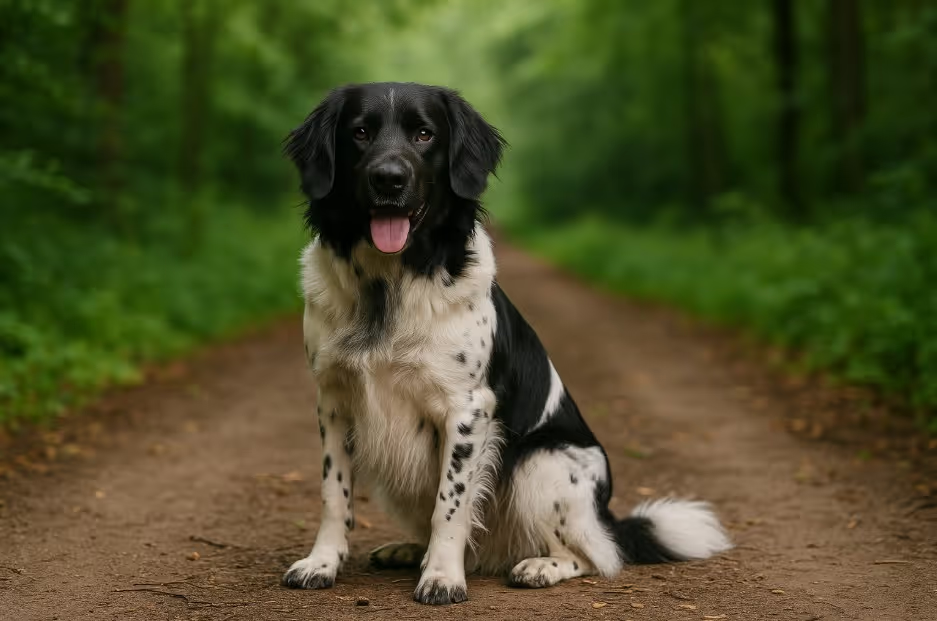The Stabyhoun (pronounced “sta-BEE-hoon”) is a rare, intelligent, and affectionate sporting dog from the Netherlands, prized for its versatility as a hunting companion, watchdog, and family pet. Known for its gentle nature, black-and-white or brown-and-white coat, and loyal temperament, the Stabyhoun is one of the rarest breeds in the world. They excel in active homes that value both a capable working dog and a devoted family companion.

The Stabyhoun originated in Friesland, a northern province of the Netherlands, as early as the 17th century. Bred as an all-purpose farm dog, the Stabyhoun was valued for hunting small game, retrieving waterfowl, guarding property, and even light draft work. Their name comes from the Frisian words “sta mij bij” (stand by me) and “houn” (dog). Once at risk of disappearing due to crossbreeding, preservation efforts began in the 20th century, and today the Stabyhoun is recognized by the Dutch Kennel Club and protected as a national treasure.
A medium-sized, well-proportioned dog with a soft, wavy coat and friendly expression.
Low-maintenance coat care, though feathering needs attention.
An active sporting breed that thrives with daily outdoor activity.
Eager to please, intelligent, and sensitive.
A balanced diet supports their athletic build and energy needs.
Generally healthy but prone to some hereditary conditions.
One of the rarest dog breeds, with limited availability outside the Netherlands.
Are Stabyhouns good family dogs?
Yes, they are gentle, affectionate, and great with children.
Do they bark a lot?
They may bark to alert but are generally not excessive barkers.
Do they shed much?
Moderately year-round, heavier during seasonal changes.
Are they easy to train?
Yes, they are intelligent and eager to please.
Do they get along with other pets?
Yes, with proper socialization.
Are they hypoallergenic?
No.
How much exercise do they need?
At least 60–90 minutes daily.